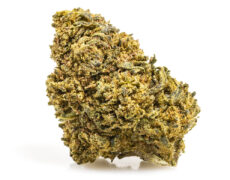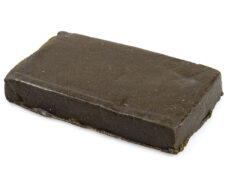Modified on: 02/10/2023
CBDV: WHAT IT IS AND WHAT SOME STUDIES SUGGEST ABOUT ITS POSSIBLE EFFICACY
If you’re passionate about CBD cannabis you’ve decided to open this article, it means you’re also part of that curious group that wants to know more about cannabidivarin.
However, what few people know is that CBDV has many potential benefits.
Such as?
In this article we will provide you with the general overview of this cannabinoid and its potential based on studies.
What is CBDV and how does it differ from CBD?
Cannabidivarin, also known as CBDV, is a non-psychoactive cannabinoid, which can found in therapeutic cannabis, and it’s one of over 100 cannabinoids identified in the plant capable of modulating its physiological activity.
Both cannabidiol and CBDV have demonstrated anticonvulsant activity in animal and human models and are yielding quite promising results.
But let’s delve into more detail.
Read also: Germany legalizes cannabis to “Protect young people”


While it has been shown that the primary components of cannabis: CBD and THC modulate many of their physiological effects by binding to specific receptors (called CB1R and CB2R), CBDV mostly utilizes mechanisms that don’t involve them at all.
So, what does this cannabinoid modulate, making it a potential ally against epileptic seizures?
It’s believed that the antiepileptic activity of CBD and CBDV is modulated by their effects on TRPV1, also known as the capsaicin receptor.
Wait, what?
Capsaicin is a member of a large family of ion channels involved in the onset and progression of various types of epilepsy.
Which means that desensitizing this ion channel can contribute to reducing the neuronal hyperexcitability that contributes to epileptic activity.
Which would be promising.
However, the studies are still being conducted on and further investigation is required.
Here are the potential medical effects of CBDV
CBD and CBDV have similar chemical structures, apart from the propyl chain (present in CBDV), and they have both revealed promising anticonvulsant activity during studies.
We’ve also mentioned that CBDV acts on the capsaicin receptor TRPV1 and specifically activates the ion channels TRPA1 and TRPV2, which lead to a reduction in epileptic activity.
We’re not done here.
CBDV, indeed, appears to share the same benefits with CBD, such as:
- Feeling of relaxation
- Muscle recovery
- Chronic pain relief
- Stress and anxiety reduction
- Sleep quality improvement
However, CBDV seems to be more suitable for treating migraines, seizures, neuropathic pain, and other similar conditions.
Now let’s focus on studies that have been conducted in terms of the beneficial effects of CBDV.
Read also: Legal marijuana Sativa: differences with cannabis indica and best strains of 2023
Promising studies on CBDV
Recently, CBDV has been paid a lot of attention to, leading researchers to conduct various studies, aiming to discover the medical potential of this cannabinoid, paying particular attention to Rett syndrome and autism.
Let’s examine this individually, shall we?
#1 CBDV for anticonvulsant activity
The British Journal studied CBDV as an anticonvulsant in rats and mice.
It appears that this cannabinoid doesn’t affect basic motor skills, which is quite significant for now.
#2 Impact of CBDV on the autism spectrum disorder
Since autism is a disorder, which cannot be cured, some treatments can be performed in order to alleviate symptoms and improve quality of life.
Having mentioned that, it has been found that CBDV could also be effective in the matter of reducing acute anxiety by interacting with brain neurotransmitters and glutamate.
#3 Effects of CBDV on Duchenne muscular dystrophy
DMD is a condition of skeleton muscle damage and inflammation. Therefore, researchers wanted to find out if CBDV had an effect for treatment.
Thus, from a study conducted on mice and published in the British Journal of Pharmacology, researchers discovered that this cannabinoid not only reduces inflammation (just like CBD oil) but also improves muscle function, which is a breakthrough.
The Italian National Research Council also published a study on the effects of CBDV and CBD on Duchenne muscular dystrophy.
The study concludes that both cannabinoids can restore the function of compromised muscle stem cells but only at higher doses. Taking it into account, it can be stated that CBDV, like CBD, can work for various types of muscular dystrophy.


#4 Effects of CBDV on Rett syndrome
Rett syndrome is a genetic condition, which cannot be cured, thus the only possible treatment consists in alleviating symptoms and improving quality of life as much as possible (just like CBD flower).
In order to succeed, a study published in the Journal of Psychopharmacology confirms that this compound can restore memory in mice with the same genetic defects as humans affected by Rett syndrome.
Furthermore, a study published in Acta Physiologia demonstrated that CBDV can reduce gastrointestinal inflammation: a common cause of other diseases.
The article “Unravelling a novel role for Cannabidivarin in the modulation of subventricular zone postnatal neurogenesis”.
On May 17, 2023, an interesting article on Cannabidivarin and its therapeutic value was published.
This study demonstrated that postnatal neurogenesis, i.e., the formation of new neural brain cells postnatally depends on the endocannabinoid system. The investigation, especially, focused on the role of cannabidivarina in neurogenesis in the subventricular zone.
With the use of neurosphere test, the impact of neural stem/progenitor cells (NSPC) derived from the SVZ on vitality, proliferation, and cell differentiation was analyzed.
The results showed that CBDV promotes cell survival by increasing their proliferation and stimulating neuronal differentiation. Additionally, CBDV exerted an inhibitory effect, preventing their differentiation and maturation. This observation supports a contrasting role of CBDV in neurogenesis compared to oligodendrocyte formation.
Other results showed that CBDV-sensitive cells exhibited increased levels of intracellular calcium, with an initial phase of increase dependent on TRPV1 activation. To sum up, this study revealed a new neurogenic potential of CBDV through the modulation of the TRPV1 receptor.
These findings provide insights for future studies regarding neural stem cells and potential therapeutic strategies, positioning CBDV as an interesting therapeutic target, as it is a non-psychoactive cannabinoid.
Conclusions
In this article, we’ve seen what cannabidivarin is and what its potential benefits are.
Currently, most studies have been conducted on animals, but the results seem promising and are hopeful.
To stay updated, visit the Justbob website: the industry-leading CBD Shop where you can find high-quality CBD flower-derived products and legal hash varieties.
See you soon!









